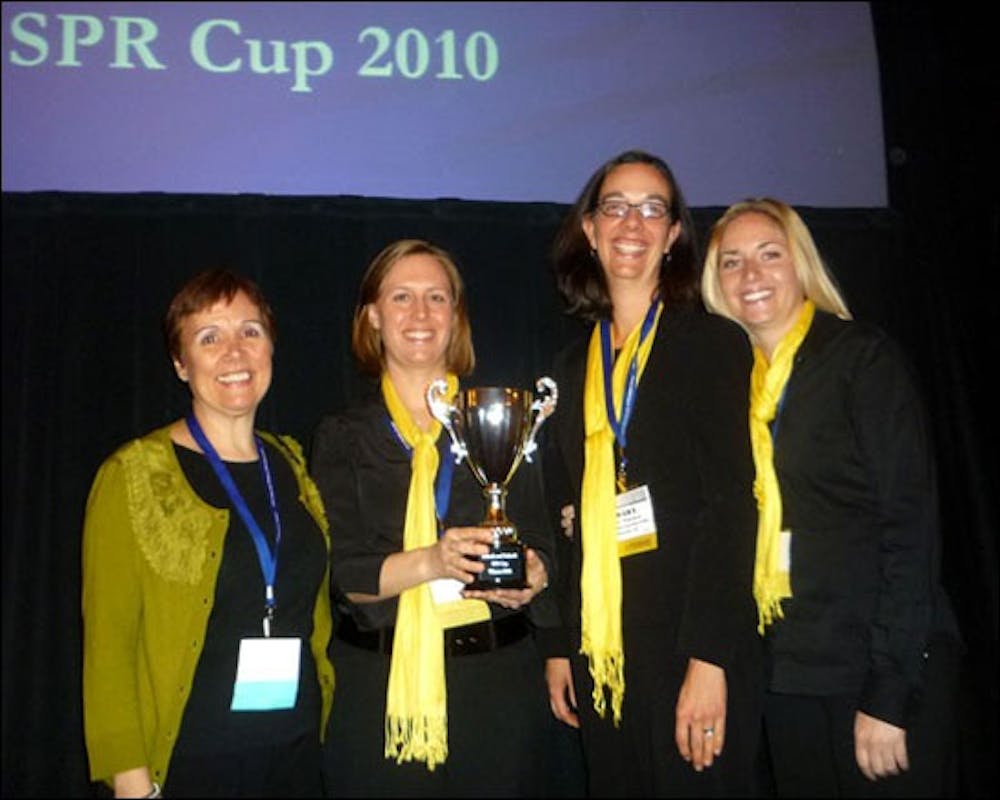Bullying can be a problem in any school, but ASU researchers found that different prevention methods can be used to reduce the problem.
Graduate students and faculty at ASU won first place in a prevention research competition by focusing on bullying.
Students and faculty at the Southwest Interdisciplinary Research Center in downtown Phoenix participated in the fifth annual 2010 Sloboda and Bukoski Society for Prevention Research Cup competition.
The goal of the competition’s participating research teams was to find results related to prevention in a fast-paced environment.
The ASU team, “SIRC du Soleil,” had to work with a data set for two months and create a 10-minute presentation from the results, which was featured at the society’s annual meeting in June.
Teams were given a data set with information on public school students and their behavior, including office disciplinary referrals. The ASU team, which did not take part in collecting the data, decided to focus on bullying prevention.
Jennifer Mullins, a research associate and doctoral intern at SIRC, was one of the team members.
“We thought bullying is a pretty hot topic right now,” Mullins said.
Although the team didn’t receive money for the award, Mullins said the team might work more with the data, like writing up the project results in a paper for publication.
“I think, more or less, it was the challenge [that] was kind of the reward for us and just having some sort of bragging rights,” Mullins said.
“The main thing was learning how to work on a project like this,” she said. “We’re fairly new to this sort of process.”
Mullins thinks her team stood out for working well together and being creative.
“I think we were the most original,” Mullins said. “We tried to make it interesting and exciting but at the same time have really strong research and statistics.”
She said SIRC usually concentrates on health disparities research, such as a drug resistance strategy program for adolescents, so the bullying aspect was new.
It was a challenge to finish the project in two months, Mullins said, estimating it would have taken about six months in normal circumstances.
“I think it was just really good time management, getting everybody to do their own parts,” Mullin said.
The team members met every week.
Monica Parsai, the assistant director of family intervention research at SIRC, said this was an opportunity to improve statistical skills and gain recognition.
“We look[ed] at what interventions really work with bullying,” she said, including the most effective ways to prevent the repetition of bullying.
“Sometimes we have general, very good strategies in the schools to prevent a number of different negative behaviors,” she said, but not everything works for specific behaviors.
Eric Hedberg, the director of research for the College of Public Programs, was the mentor for the ASU team.
“What they mainly found was that the only two interventions that really seemed to work was loss of privileges…and parent-teacher conferences,” Hedberg said.
Mark Eddy, the chair of the SPR Cup, said three teams competed and the data came from University of Oregon’s College of Education, which was also one of the competitors.
He said ASU won because they worked and presented well together, and had a creative flair.
“It was like the full package,” Eddy said. “Not only were they smart, but they had some pizzazz.”
Another ASU team from the Prevention Research Center and psychology department won in 2006, he said.
In order to participate, he said researchers have some limitations, including not being a principal investigator on a grant, and it’s limited to recent or current graduate students.
“You have to be far enough along in your career that you can do this, but not too far along,” Eddy said.
Reach the reporter at reweaver@asu.edu





